Introduction
The Power of High Fiber Cereals for Seniors
As we age, our nutritional needs evolve, making it essential to focus on foods that support overall health and wellness. One of the easiest and most effective ways to start the day with balanced nutrition is by choosing high fiber cereals. These cereals provide a foundation of essential nutrients that help seniors maintain energy, digestive health, and satiety throughout the morning hours. For older adults, a diet rich in fiber can significantly improve various aspects of health, from digestion to heart function. High fiber cereals are particularly beneficial as they offer an effortless way to incorporate ample fiber in a single meal, supporting both daily wellness and long-term health.
Why Fiber is Vital in Aging Diets
Fiber plays an integral role in a senior’s diet by aiding digestion, regulating blood sugar levels, and contributing to heart health. As we age, our digestive system often slows down, which can lead to issues such as constipation. High fiber cereals provide both soluble and insoluble fiber, which support smooth digestion and regularity. Soluble fiber, found in oats and barley-based cereals, helps lower cholesterol, while insoluble fiber, commonly found in wheat bran, assists in preventing constipation.
The Nutritional Benefits of High Fiber Cereals
Choosing a high fiber cereal each morning is more than just a healthy habit; it's a powerful choice for better aging. These cereals are often rich in additional nutrients like whole grains, vitamins, and minerals that promote vitality and energy. Many high fiber cereals are fortified with B vitamins, calcium, and vitamin D—all nutrients that seniors need in greater amounts to support bone health, cognitive function, and overall wellness. By choosing the right high fiber cereal, seniors can enjoy a nutritious start to their day that aligns with their unique dietary needs and preferences, fostering both immediate satisfaction and long-term health benefits.
Affiliate Disclaimer
Our website may include links to affiliate sites. If you click on an affiliate link and make a purchase, we may earn a small commission or receive other compensation at no extra cost to you. Please note that many of the links on our site are affiliate links. Our use of these links does not impact the products, services, or websites we recommend to you. This disclaimer covers all forms of communication with you, including our website, email, phone, social media, products, and other platforms.
Amazon Affiliate Disclaimer
We participate in the Amazon Services LLC Associates Program, an affiliate marketing program that allows us to earn fees by linking to Amazon.com and its affiliated sites. If you click on an Amazon affiliate link on our site and make a purchase, we may receive a small commission at no additional cost to you.
Section 1: The Importance of Fiber in Senior Nutrition
Fiber as a Key Nutrient for Seniors
Fiber is a cornerstone of a balanced diet, especially in senior nutrition, where it serves as an essential nutrient to support health as the body ages. Seniors often face unique health challenges, including slower digestion, increased risk of heart disease, and potential issues with blood sugar management. Fiber-rich foods, like high fiber cereals, can address many of these concerns, making them a beneficial choice for those looking to enhance their overall well-being. Fiber comes in two primary types—soluble and insoluble—that together support multiple facets of health. Each type of fiber works differently in the body, providing distinct advantages for seniors seeking to optimize their health through diet.
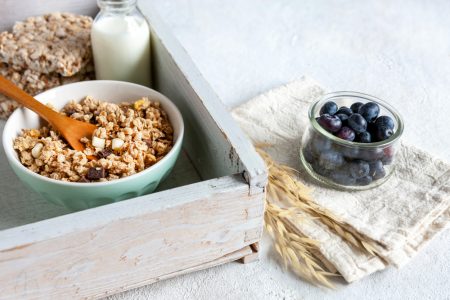
Digestive Health: Supporting Regularity and Gut Health
One of the most immediate benefits of fiber for seniors is its positive impact on digestion. As the digestive system slows down with age, constipation can become a common issue. Insoluble fiber, found in bran and whole grains, helps keep food moving smoothly through the digestive tract, preventing constipation and discomfort. This fiber adds bulk to stools and promotes regularity, which is essential for both comfort and the efficient removal of waste from the body. High fiber cereals that contain bran, oats, or other whole grains are particularly effective at supporting digestive health, making them a reliable choice for seniors struggling with constipation.
In addition, a well-functioning digestive system supports the gut microbiome, a community of beneficial bacteria that play a role in immunity, mood regulation, and overall health. Fiber serves as food for these beneficial bacteria, promoting a balanced gut environment that can help seniors feel their best.
Heart Health: Lowering Cholesterol and Blood Pressure
Heart disease remains one of the most significant health risks for older adults, making heart health a top priority in senior nutrition. Soluble fiber, commonly found in oats, barley, and psyllium, is particularly effective at lowering LDL (bad) cholesterol levels. This type of fiber dissolves in water to form a gel-like substance that binds to cholesterol in the digestive tract, preventing it from being absorbed into the bloodstream. Incorporating high fiber cereals that are rich in soluble fiber into a daily diet can be a powerful step towards improved cardiovascular health, helping to reduce the risk of heart disease, high blood pressure, and related conditions.
In addition to lowering cholesterol, fiber also aids in stabilizing blood pressure. A diet rich in high fiber foods helps regulate blood pressure by improving blood vessel function and reducing inflammation in the body. For seniors at risk of hypertension, choosing a heart-healthy, high fiber cereal can be an easy yet impactful dietary change that supports heart health in the long term.
Blood Sugar Control: Managing Glucose Levels
Many seniors face challenges in managing their blood sugar levels, especially those with diabetes or pre-diabetes. Fiber slows down the digestion and absorption of carbohydrates, which helps prevent blood sugar spikes after meals. This effect is particularly beneficial for seniors who need to maintain stable glucose levels. High fiber cereals with a low glycemic index, such as those containing oats, barley, or flaxseeds, provide a sustained energy release without causing rapid increases in blood sugar. By helping to maintain blood sugar balance, high fiber cereals can contribute to better management of diabetes and reduce the risk of developing insulin resistance.
Weight Management and Satiety: Feeling Full and Satisfied
Maintaining a healthy weight becomes more challenging with age, as metabolism slows and muscle mass tends to decrease. Fiber is a valuable ally in weight management because it helps increase satiety, or the feeling of fullness, which can reduce the urge to overeat. High fiber cereals are an ideal choice for seniors looking to manage their weight without feeling deprived, as they provide long-lasting energy that curbs hunger and supports portion control. When consumed as part of a balanced breakfast, these cereals help seniors feel full for longer, reducing the need for mid-morning snacks and supporting healthy weight maintenance.
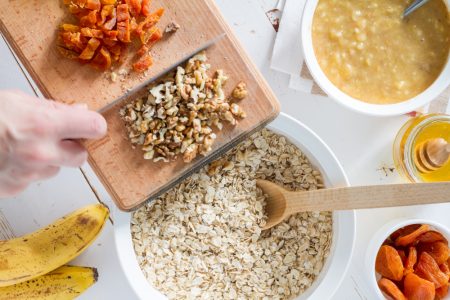
Conclusion: The Broad Benefits of High Fiber Cereals in Senior Diets
In summary, fiber plays a multifaceted role in senior health, positively impacting digestion, heart health, blood sugar management, and weight control. By integrating high fiber cereals into their daily diet, seniors can enjoy a convenient, nutrient-dense meal that supports their overall wellness. Choosing a high fiber cereal tailored to individual dietary needs not only enhances physical health but also contributes to a sense of vitality and satisfaction. For seniors focused on maintaining quality of life, the addition of high fiber cereals can be a simple yet powerful step towards better health and well-being.
Section 2: What to Look for in High Fiber Cereals for Seniors
Choosing the Right High Fiber Cereals
When selecting high fiber cereals for seniors, it’s essential to look beyond the fiber content and consider other factors that will contribute to overall health and dietary enjoyment. While fiber is a primary benefit, other nutritional and practical aspects should guide the selection process, from low sugar levels to added vitamins and minerals. Seniors can enjoy high fiber cereals that meet these standards for a balanced and health-promoting start to the day. Here are some key components to consider when choosing the right high fiber cereals tailored to senior nutrition.
1. Adequate Fiber Content
Fiber content is a crucial starting point when evaluating high fiber cereals. Seniors should aim for cereals that offer at least 5-10 grams of fiber per serving. This amount provides a significant portion of the recommended daily fiber intake, helping to promote digestive health, improve satiety, and support heart health. Both soluble and insoluble fibers are beneficial, so cereals made from oats, barley, bran, or flaxseeds are good options. These grains and seeds contain a balanced blend of fiber types, supporting cholesterol management and regular bowel movements. By choosing high fiber cereals with sufficient fiber content, seniors can meet their daily fiber goals with ease.
2. Low Added Sugar Content
Many breakfast cereals, including some marketed as “high fiber,” can contain high amounts of added sugars. Added sugars provide empty calories, contribute to weight gain, and can negatively impact blood sugar levels, which is especially concerning for seniors with diabetes or those at risk. When selecting a high fiber cereal, look for options with minimal added sugar, ideally less than 6 grams per serving. Cereals sweetened with natural ingredients like dried fruits can offer a hint of sweetness without the health risks associated with refined sugars. Reading the ingredient label and choosing cereals marked “low sugar” or “no added sugar” can help seniors enjoy their high fiber cereals without compromising their health.

3. Whole Grain Ingredients
Whole grains are a valuable addition to any diet, especially for seniors, due to their nutrient-dense profile. High fiber cereals made with whole grains, such as oats, barley, and wheat, are rich in vitamins, minerals, and antioxidants. Whole grains provide additional nutrients like magnesium, iron, and B vitamins, which are essential for energy, brain function, and immune support. Choosing cereals that list whole grains as a primary ingredient ensures seniors receive the maximum nutritional benefits. By focusing on whole grain fiber cereals, seniors not only increase their fiber intake but also gain essential nutrients that support overall health and vitality.
4. Fortified with Essential Vitamins and Minerals
As we age, the body’s ability to absorb certain nutrients decreases, making it important to choose foods that are fortified with vitamins and minerals. Many high fiber cereals are enriched with essential nutrients like calcium, vitamin D, and vitamin B12. Calcium and vitamin D are particularly important for bone health, helping to reduce the risk of osteoporosis and fractures, while B12 supports cognitive function and energy. Choosing a high fiber cereal fortified with these key vitamins and minerals provides added value, especially for seniors who may not get enough of these nutrients from other food sources. Fortified cereals can help bridge any nutritional gaps in a senior’s diet, promoting better health outcomes.
5. Ease of Preparation and Digestibility
Seniors often benefit from foods that are easy to prepare and digest, as cooking abilities and digestive function can change with age. High fiber cereals that require minimal preparation, such as instant oats or no-cook muesli, are convenient options that can be enjoyed daily. It’s also important to consider the cereal’s digestibility; while fiber is essential, very high fiber cereals can sometimes cause bloating or discomfort if the digestive system is sensitive. Choosing cereals with moderate fiber content and incorporating them gradually can help the body adjust, promoting comfort and regularity without digestive upset.
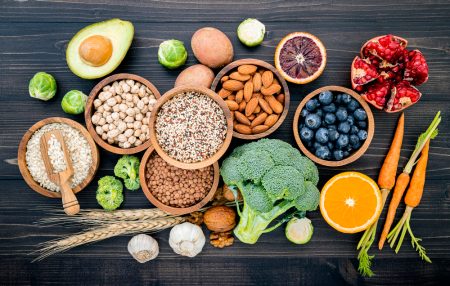
6. Added Functional Ingredients for Enhanced Health
Some high fiber cereals include additional functional ingredients, such as flax seeds, chia seeds, or psyllium, which offer unique health benefits. Flax and chia seeds are rich in omega-3 fatty acids, beneficial for brain and heart health, while psyllium adds soluble fiber that supports digestive health and cholesterol management. Seniors seeking specific health benefits may look for high fiber cereals that include these functional ingredients for a more targeted approach to wellness. By choosing a cereal with added functional ingredients, seniors can enjoy a versatile meal that addresses multiple aspects of health.
Conclusion: Finding the Perfect High Fiber Cereals for Seniors
Selecting the right high fiber cereals for seniors involves balancing fiber content with other nutritional considerations, such as low sugar levels, whole grains, and essential vitamins. Fortification, ease of preparation, and the inclusion of functional ingredients also make these cereals more valuable in a senior’s diet. With a thoughtful approach to choosing high fiber cereals, seniors can enjoy a satisfying, nutrient-rich breakfast that supports digestion, heart health, and overall vitality. Taking these factors into account makes it easier to select a high fiber cereal that not only meets dietary needs but also contributes to a vibrant and healthful lifestyle.
Section 3: The Ultimate List of High Fiber Cereals for Seniors
Exploring High Fiber Cereals with Senior Health in Mind
Choosing the right high fiber cereals for seniors can make a significant difference in meeting daily nutritional needs and promoting overall health. From managing digestion to supporting heart health and blood sugar levels, each cereal on this list brings unique benefits tailored for seniors. Here’s a well-rounded selection of high fiber cereals that seniors can enjoy to maintain their vitality and well-being.
1. Bran Flakes
Bran flakes are a classic choice among high fiber cereals and are particularly beneficial for seniors seeking digestive support. Made primarily from wheat bran, these flakes offer a substantial amount of insoluble fiber that helps keep the digestive system regular. Bran flakes typically contain around 7-10 grams of fiber per serving, making them an effective choice for maintaining digestive health. Additionally, bran flakes are often low in sugar, which is beneficial for blood sugar management.
Tip for Enjoyment: Try adding some fresh berries or a handful of nuts to bran flakes for added flavor, antioxidants, and healthy fats.
2. Oat-Based Cereals
Oats are one of the most versatile and widely appreciated high fiber cereals. Rich in soluble fiber, specifically beta-glucan, oats help to lower LDL (bad) cholesterol, making them a heart-healthy choice for seniors. Steel-cut oats, oat bran, and instant oats all provide excellent fiber content, typically ranging from 4-8 grams per serving. Oats also have a low glycemic index, which means they’re less likely to spike blood sugar levels, providing a steady source of energy.
Tip for Enjoyment: Prepare oats with milk or a dairy alternative for added calcium and vitamin D, and sprinkle with cinnamon for added flavor and blood sugar benefits.
3. Wheat Germ Cereal
Wheat germ cereal is a nutrient-dense option that provides fiber along with essential vitamins and minerals. High in vitamin E, magnesium, and folate, wheat germ cereal supports cardiovascular health and cellular function. Although not as high in fiber as bran or oat cereals, wheat germ can be combined with other high fiber cereals to increase fiber content while adding a mild, nutty flavor.
Tip for Enjoyment: Mix wheat germ with yogurt or sprinkle it on other cereals for an extra nutrient boost.
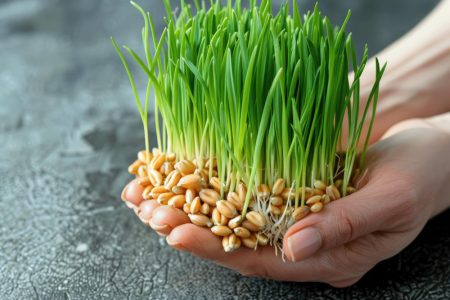
4. Multi-Grain Cereals
Multi-grain cereals, often a blend of oats, barley, and other whole grains, are another excellent choice for seniors. These cereals combine different grains to offer a diverse nutritional profile, including a variety of fibers and other beneficial nutrients like magnesium and B vitamins. Multi-grain high fiber cereals typically provide around 5-7 grams of fiber per serving and are rich in antioxidants, supporting overall wellness and immune health.
Tip for Enjoyment: Add dried fruits like raisins or apricots to enhance flavor and provide natural sweetness without added sugars.
5. Flax Seed and Chia Seed-Infused Cereals
Flax and chia seed-infused cereals provide a fiber-rich base along with healthy omega-3 fatty acids that benefit brain and heart health. These seeds are packed with soluble and insoluble fiber, supporting digestion and promoting a feeling of fullness. With around 6-8 grams of fiber per serving, flax and chia cereals are a balanced, nutrient-dense option for seniors.
Tip for Enjoyment: Enjoy with fresh fruit and a splash of almond milk for a creamy, fiber-filled breakfast.
6. Psyllium Fiber Cereals
Psyllium is a powerful source of soluble fiber known for its effectiveness in promoting regularity and supporting heart health. Psyllium fiber cereals provide around 6-10 grams of fiber per serving, helping to lower cholesterol and stabilize blood sugar levels. These cereals are particularly beneficial for seniors who need digestive support or have a history of heart health concerns.
Tip for Enjoyment: Psyllium fiber cereals can be enjoyed warm with a drizzle of honey for a soothing, hearty meal.
7. High-Fiber Granola
Granola is a tasty and versatile high fiber cereal, although it’s important to choose varieties with low added sugar. Look for high fiber granolas made with whole grains, nuts, and seeds, which provide 5-7 grams of fiber per serving. Granola is also an excellent source of healthy fats, adding satiety and flavor to breakfast.
Tip for Enjoyment: Pair with plain yogurt for added protein, or sprinkle on fresh fruit for a fiber-rich snack.
8. Barley-Based Cereals
Barley is a whole grain high in beta-glucan, a soluble fiber known for its cholesterol-lowering properties. Barley-based cereals offer a unique, chewy texture and provide 5-8 grams of fiber per serving, making them both heart-healthy and satisfying. Barley’s low glycemic index also makes it ideal for seniors managing blood sugar levels.
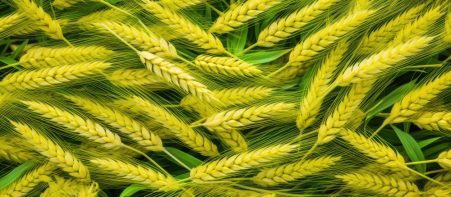
Tip for Enjoyment: Combine with nuts and a touch of maple syrup for a naturally sweet, high fiber breakfast.
9. High-Fiber Muesli
Muesli, a combination of oats, dried fruits, and nuts, is a delicious high fiber cereal option with a satisfying blend of textures and flavors. Depending on its ingredients, muesli typically provides 5-7 grams of fiber per serving. This type of cereal is rich in antioxidants, vitamins, and minerals, supporting immune function and energy levels for seniors.
Tip for Enjoyment: Soak muesli in milk overnight for a creamy, ready-to-eat breakfast, or add fresh fruit for added fiber and sweetness.
10. Corn Bran Cereals
Corn bran cereals are a gluten-free option that offers around 6 grams of fiber per serving. These cereals are a great choice for seniors with gluten sensitivities who still want to enjoy the benefits of high fiber cereals. Corn bran provides a light, crunchy texture and is easy to digest, making it a gentle yet fiber-rich choice.
Tip for Enjoyment: Pair with milk or a dairy alternative, and add berries or banana slices for a nutritious, colorful meal.
Each of these high fiber cereals provides a unique set of nutrients and benefits, catering to seniors' health needs and dietary preferences. From bran and barley to chia seeds and muesli, there’s a cereal on this list to suit every taste and health goal. By incorporating these high fiber cereals into a regular breakfast routine, seniors can enjoy a convenient, nourishing meal that supports digestion, heart health, and overall vitality.
Section 4: Tips for Incorporating High Fiber Cereal into Your Routine
Making High Fiber Cereals Part of a Balanced Breakfast
High fiber cereals offer an easy and nutritious way to start the day, but incorporating them into your routine doesn’t have to mean the same bowl of cereal every morning. With a few simple strategies, you can enjoy variety and maximize the health benefits of high fiber cereals. Whether you’re aiming to add extra nutrients or experimenting with different flavors, these tips will help you make high fiber cereals a satisfying and balanced part of your daily breakfast.
1. Add Fruits for Extra Fiber and Flavor
One of the simplest ways to enhance your high fiber cereal is by adding fresh or dried fruit. Fruits like berries, bananas, apples, and pears are rich in fiber and provide natural sweetness, which can complement the taste of the cereal. Dried fruits like raisins, apricots, or figs also pair well with high fiber cereals and add a pleasant chewiness. Adding fruit not only boosts fiber content but also provides essential vitamins and antioxidants, supporting immune health and reducing inflammation.
Tip for Enjoyment: Try a variety of seasonal fruits to keep your cereal fresh and interesting. Mixing fruits like strawberries and blueberries with bran flakes, for example, provides both a nutrient boost and a delicious burst of flavor.
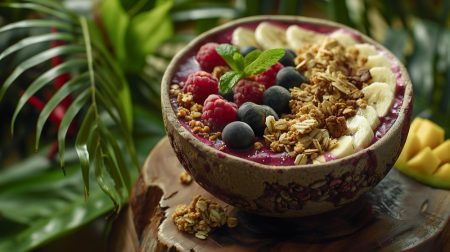
2. Use Dairy or Dairy Alternatives for Added Nutrients
Pairing high fiber cereals with milk or a fortified dairy alternative, like almond or oat milk, is an excellent way to add more calcium, vitamin D, and protein to your breakfast. These nutrients are essential for seniors, especially for supporting bone health and muscle maintenance. Fortified non-dairy milks are also a good choice for those who are lactose-intolerant, as they often contain the same key nutrients found in traditional milk.
Tip for Enjoyment: Warm your milk before adding it to the cereal for a comforting, porridge-like breakfast during colder months. This also works well with oat-based high fiber cereals and helps soften the texture.
3. Experiment with Textures and Temperatures
High fiber cereals come in a variety of forms, from crunchy granola to creamy oat porridge. Switching up textures and temperatures can help make your breakfast more enjoyable and prevent boredom. For instance, cold cereals can be refreshing on warm days, while hot cereals like oatmeal or psyllium fiber porridge offer a cozy option for cooler mornings. Mixing textures, such as combining granola with yogurt, can make breakfast feel more like a treat while providing additional fiber and protein.
Tip for Enjoyment: Prepare your high fiber cereal the night before by making overnight oats or muesli. Simply soak oats or muesli in milk, add fruits and nuts, and leave it in the fridge. This quick prep method makes a creamy, delicious breakfast that’s ready to eat in the morning.
4. Add Nuts and Seeds for Healthy Fats and Protein
To boost the nutritional profile of your high fiber cereal, consider adding nuts and seeds. Flax seeds, chia seeds, and nuts like almonds or walnuts are high in fiber and healthy fats, which promote heart health and brain function. These toppings add a delightful crunch and enhance satiety, keeping you full for longer periods. Adding a variety of nuts and seeds ensures you’re getting essential omega-3 fatty acids and other nutrients that support senior health.
Tip for Enjoyment: Toast nuts and seeds lightly before adding them to your cereal for extra flavor, or stir in a tablespoon of chia seeds with milk and let it sit for a thicker, fiber-rich breakfast.
Conclusion: Creating a Routine with High Fiber Cereals
Incorporating high fiber cereals into your daily routine doesn’t have to be repetitive. By adding fruits, experimenting with dairy options, varying textures, and adding nuts or seeds, you can keep breakfast interesting and nourishing. High fiber cereals can easily become a highlight of your day, providing essential nutrients and promoting overall health for a balanced, enjoyable morning meal.
Conclusion
Incorporating high fiber cereals into a daily breakfast routine is an easy, delicious, and effective way for seniors to support their health. From promoting digestive regularity to lowering cholesterol and stabilizing blood sugar, high fiber cereals provide numerous benefits essential for aging well. By thoughtfully choosing cereals with whole grains, low sugar content, and added vitamins, seniors can enjoy a meal that meets their nutritional needs while also being satisfying and convenient.
Adding variety with fruits, dairy or dairy alternatives, and nutrient-dense toppings like nuts and seeds further enhances the flavor and nutritional value of each bowl. High fiber cereals can thus become a versatile foundation for a balanced breakfast that promotes both physical and mental well-being. By embracing high fiber cereals as part of a daily routine, seniors can start each day with the nutrition they need to feel energized and supported.


